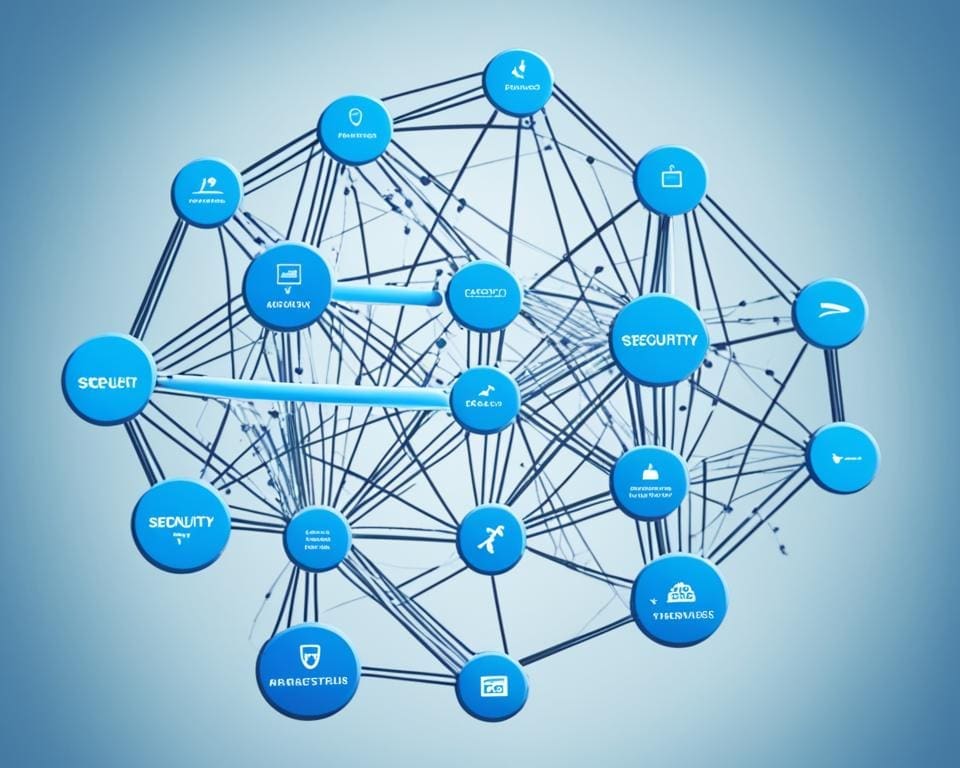Today, keeping API integrations secure is more important than ever. APIs link different systems and services, allowing them to share data easily. This sharing is great for innovation but can also lead to security risks. So, it’s critical to follow the best practices for protecting APIs. This ensures the safety of sensitive data, keeps data accurate, and complies with laws.
Cyber threats are on the rise, with data breaches affecting billions. To protect APIs, companies need to act. This means adopting safe strategies to deal with risks such as harmful API payloads or denial-of-service attacks. By regularly checking and updating APIs, encrypting data as it moves, and using secure authentication like OAuth 2, companies can fight off new threats. This effort helps build trust and reliability in using APIs.
Understanding API Security Risks and Vulnerabilities
In today’s fast-moving digital world, APIs are key but they bring risks. Understanding API security threats is vital for companies relying on online connections. By knowing the dangers and taking action, businesses can protect their data and keep running smoothly.
Common API Security Threats
Many threats against APIs are well-known, such as:
- Broken Object-Level Authorization (BOLA): Attackers might access or change data they shouldn’t.
- Injection Attacks: Here, hackers use code flaws to snatch private data.
- Broken Authentication: Poor password policies or weak authentication can offer hackers easy entry.
- DDoS Attacks: These overload systems with too much traffic, blocking real users.
Types of Cyberattacks Targeting APIs
APIs face many types of cyberattacks, including:
- Man-in-the-Middle (MitM) Attacks: Hackers intercept data being sent, risking exposure.
- Data Scraping: Unwanted gathering of data in bulk, often undetected.
- Automated Attacks: The automatic nature of APIs can be abused for large-scale attacks.
Importance of API Security Measures
It’s essential to have strong API security. Steps to take include:
- Fine-Grained Access Control: Tighten who can see what, to keep data safe.
- HTTPS for API Traffic: Use encryption to keep sensitive information secure during transfer.
- Centralised OAuth Servers: This helps manage access securely and efficiently across teams.
- Regular Audits: Check systems often to find and fix weak spots.
API attacks have spiked by 400%. Prioritising security efforts is crucial for handling these challenges effectively.

Best Practices for Securing API Integrations
In today’s digital world, securing API integrations is crucial for organisations. They need to protect sensitive data and ensure they meet rules. Developers can lower risks linked to API weaknesses by taking strong steps. Here are some top ways to make API security better.
Implementing Robust Authentication Mechanisms
It’s vital to have strong methods for checking who gets access to APIs. Using standards like OAuth 2.0, API keys, and tokens helps. These limit access to only those allowed. Adding multi-factor authentication makes it even safer. It’s important to keep these methods up to date and follow laws like GDPR and HIPAA. This keeps trust and protects important information.
Utilising Encryption and TLS for Data Protection
Encrypting data, especially with Transport Layer Security (TLS), is key during data movement. TLS protects against secretly listening in and keeps the data’s integrity between clients and servers. Following this best practice reduces the chance of man-in-the-middle attacks. It creates a secure space for users and their data.
Regular Audits and Updates for API Security
Doing frequent checks and updates is key for good API security. Looking for vulnerabilities and applying patches keeps APIs safe from new dangers. Using tools like Postman and SoapUI helps check API integration security. Being proactive and handling errors well prevents data leaks. It also ensures organisations meet standards set by SOC 2 and ISO 27001.









